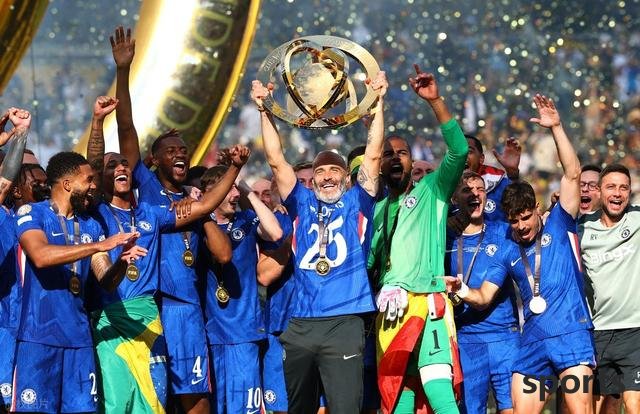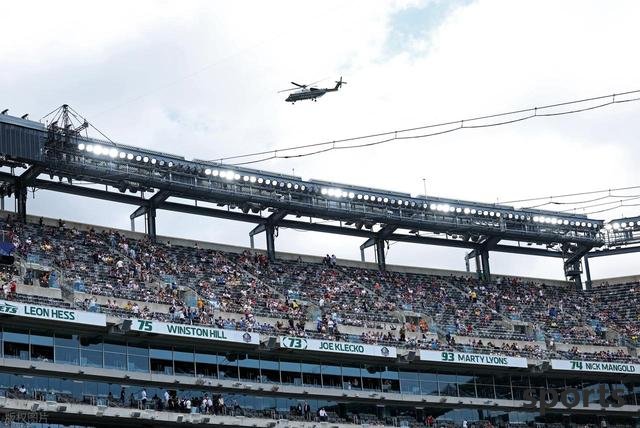2025 Club World Cup ends, 2026 World Cup preparations are accelerating: Six major challenges need to be solved by FIFA
11:35pm, 17 July 2025Football
The 2025 FIFA Club World Cup came to an end in the United States. As a global club event that expanded to 32 teams for the first time, it is regarded as a "full preview" of the 2026 World Cup. Although from a business perspective, this event attracted widespread attention and successfully aroused the enthusiasm of fans to watch the game, the exposure of many basic issues also sounded the alarm for FIFA.
ESPN recently published a column pointing out that if these structural challenges are not solved, the 2026 World Cup may "bury hidden dangers behind the excitement", and may even fall into chaos at critical moments. The following six major issues are the "warning list" left by the 2025 Club World Cup for the 2026 World Cup.

Weather is no longer just an environmental problem, but a safety problem
The summer heat in the United States has long been no longer news, but during this Club World Cup, several games were disturbed by high temperatures, thunderstorms and strong convective weather, which is no longer as simple as "bad experience", but has actually affected the rhythm of the game and the safety of players.
In the group match between Manchester City and Urawa Red Diamonds, the temperature was as high as 34℃. The game was held at noon, and the somatosensory temperature was even close to 40℃. Many players needed ice packs to cool down during the break.

Manchester City coach Guardiola bluntly said: "Players are like playing football in an oven on the court. At this temperature, any technique and tactics have lost their meaning." Some players even revealed in an interview after the game that they had symptoms such as dizziness, nausea, muscle cramps, etc. during the game, and some substitutes were replaced in the midfield.
In addition, the game between Boca Youth and Auckland City was interrupted for nearly an hour due to a thunderstorm, interrupting the rhythm of the game and directly affecting the players' psychological state. Such frequent weather interference raises a serious question to FIFA: If the World Cup is still scheduled to be held in the hot and hot summer temperatures of North America in the future, who will be responsible for possible heatstroke, suspension, or even personal injury?
The start time should be player-oriented, rather than TV advertising. During the Club World Cup, many games are scheduled at noon and afternoon hours, obviously to cater to the ratings of European audiences. However, this arrangement of "sacrificing the quality of the competition for broadcasting" has aroused a lot of dissatisfaction.

ESPN clearly pointed out in the article: "FIFA must understand that the charm of the World Cup is enough to keep fans around the world on the screen at any time." In other words, there is no longer the need to attract audiences by scheduling the game in a certain "prime time", but the players' health should be the first priority.
The 2026 World Cup will reach 104 games. If you blindly pursue the maximization of time and compress the player's recovery cycle, coupled with the tiredness and high temperatures of the journey, it is likely that players will be injured or even withdrawn during the knockout stage, which will affect the quality of the game.
The schedule is too large, and the journey arrangement may become the biggest risk point
The 2026 World Cup is the first time in history, involving dozens of cities in the United States, Canada and Mexico. Among them, there are more than 10 core competition cities in the United States, with a flight time from Seattle to Miami up to 6 hours. If the schedule is not arranged reasonably, it will put tremendous pressure on players' physical fitness and recovery.
During the 2025 Club World Cup, Real Madrid suffered flight delays and was forced to temporarily cancel the press conference; the Paris Saint-Germain player bluntly said after the game: "Continuous flight + multi-time zone time difference + turf difference = fatigue accumulation." For professional players, this arrangement may mean increasing the probability of injury, a decline in game status and even affecting tactical execution.

Not to mention the large number of team media, referees, staff and thousands of fans - behind such a large number of mobile people, if there is no efficient and stable transportation system as support, once a certain node collapses, it may trigger a chain reaction, resulting in serious consequences such as disordered schedule, fans are stuck, and media missed reporting windows.
The quality of turf is frequently criticized, but "temporary workers" are used in professional competitions?
The most dissatisfied with players in this Club World Cup is the quality of the turf. Since some stadiums were originally rugby or American football fields, the temporary turf was not only uneven, but also had obvious seams, which caused the ball speed to be distorted and affected ball control.
Paris coach Enrique criticized the turf problem at a post-match press conference more than once: "We can hardly complete continuous passes on it." Real Madrid midfielder Bellingham also publicly stated: "This turf is not much different from farmland."
The turf problem not only affects the quality of the game, but also directly threatens the health of players. Several players suffered sprain from knee and ankle slippage during the game. For superstars who are worth tens of millions of euros, the cost of injuries caused by such low-level mistakes is extremely heavy.
Although FIFA stipulates that natural turf must be used in the World Cup, many host cities have not completed the turf replacement plan, and some stadiums have not been renovated so far. If construction is not completed before the end of 2025, the turf issue in 2026 may trigger international controversy.
Traffic and audience experience become a "gray zone", and fans may become the biggest victims
The success of a top sports event is not limited to 90 minutes of performance on the court. The overall experience of fans is the core of determining the reputation of the event.
During this Club World Cup, there were problems such as long traffic jams in Miami, Dallas, Los Angeles and other places, fans were caught for a long time, walking several kilometers, and not being able to find a shuttle bus after the game. What's more, some people were rushed to the hospital at the entrance of the stadium due to high temperature and dehydration.
In the group match between Paris and Atletico Madrid, some media reporters arrived at the stadium 20 minutes after the start of the game, but the reason was that "the parking space could not be found + the queue for entry was too long."
ESPN criticized: "FIFA is indifferent to 'thing outside the venue', which will seriously undermine the overall reputation of the event. ”
You should know that more than 5 million people are expected to enter the 2026 World Cup. If each city is not equipped with a large number of temporary buses, track support, volunteer guidance system, and emergency medical system, it will easily cause chaotic scenes.
Players are under pressure, and the World Cup may be "small stars"?
During the 2025 Club World Cup, many teams, including Manchester City, Chelsea, Paris, etc., have experienced **"non-main lineup participation"**. The essential reason is very simple: season fatigue + intensive schedule + bad weather, no one wants to take risks in meaningless games.
Chelsea coach Pochettino admitted: "We must protect the players, otherwise we will fall before the start of the season. ”
The 2026 World Cup is not only unprecedented in scale, but the schedule is even tighter: 104 games were played in 32 days, each team with a maximum of 8 games. Combined with long journeys, hot climate, and dense schedules, FIFA must be vigilant - players may not not want to play, but "can't play at all."
If the World Cup lacks stars like Mbappe, Haaland, and Vinicius, will they still maintain their due appeal? This is a question that FIFA must face.
2025 is a rehearsal, and 2026 is a real test The end of the Club World Cup is an end, but it is more like a comprehensive "problem exposure". Transportation, climate, turf, schedule, player status, fan experience... The organizers of the 2026 World Cup, city government, and FIFA must come up with a practical action plan.
Fans need comfortable experience, players need safe environment, and events need high-quality confrontation. The joint realization of these three is the real success of the World Cup.
The footsteps in 2026 are getting closer and closer, and there is not much time left for improvement.
source:m7 cnLast:Real Madrid: Unmet salary with Mbappe, may Vinicius Junior leave?
Next:DO: Newcastle explores Visa deals, cools interest in Ekitic
Related Posts
- Paris 1 wears 3+ wins 4 Premier League teams! Ligue 1 official post: French win♂
- Joe Cole + McManaman: Kolquez performed poorly, and Wirtz did not perform well either.
- Sun: Last year s sports revenue rankings Ronaldo ranked first with nearly 200 million pounds of annual revenue
- Inter Milan lost the league championship, and only the Champions League champion is left to win this season. Is it a success or a failure!
- Merson: Amorin s system is actually very suitable for Chelsea. Manchester United will not be close to the European seat this year
- After spending 200 million, you still have to buy someone! Echo: Liverpool still wants to sign center + central defender this summer, I am interested in Gee
- Is it right or wrong to stay in the team? Chiesa is facing a trough in her career, and the 17-year-old star becomes his competitor
- Alonso s "007 Plan": The precision chess game behind Real Madrid s seven wins in the new season
- The referee misjudged the decision to cause Manchester United to lose to Arsenal? The effective reason for conceding the goal is exposed, but Cunha should get a penalty
